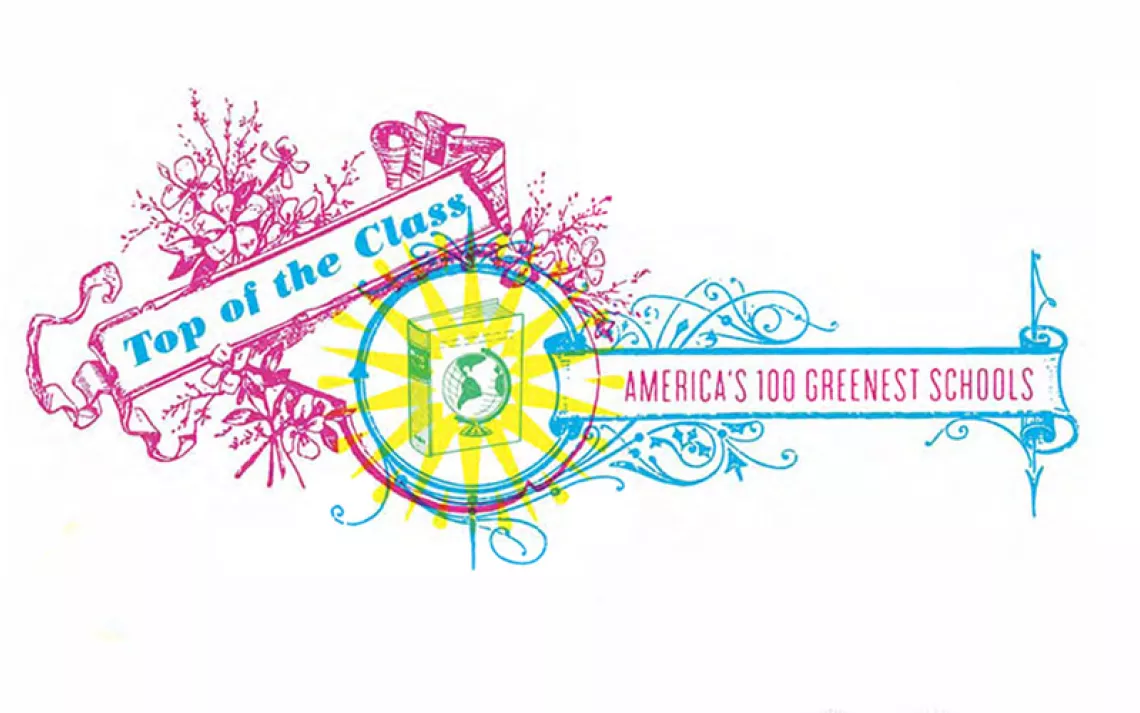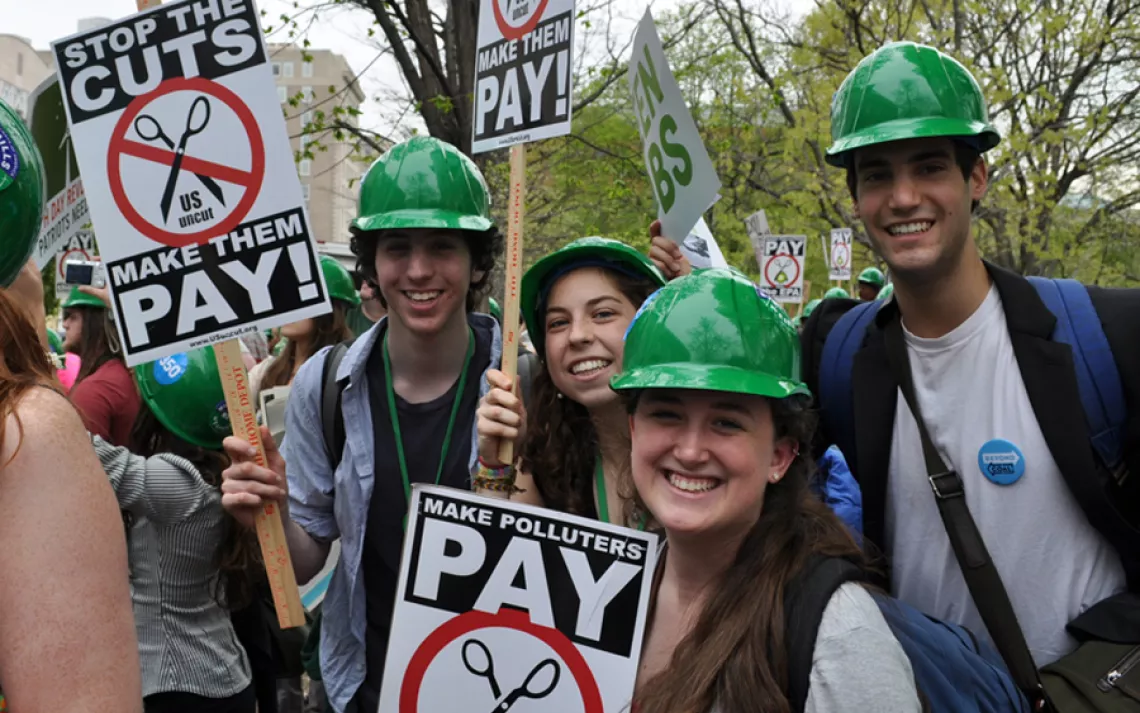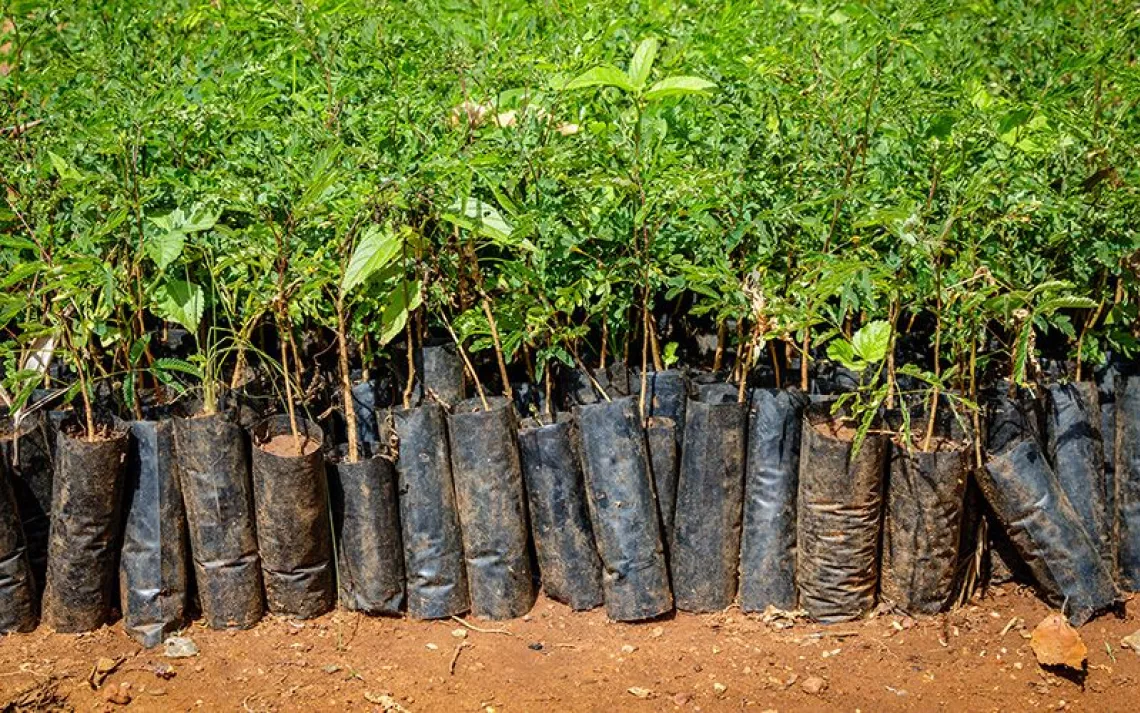UC Irvine Is a Perennial "Cool School"
What’s the secret to the Southern California school’s success?

Photos courtesy of University of California, Irvine
University of California, Irvine, has done what no other school has done—rank among Sierra’s Top 10 most sustainable colleges for eight years in a row. With its precisely circular campus, abundance of brutalist architecture, and large percentage of commuter students, the public research university is a far cry from the largely crunchy, liberal-arts-centric schools that often dominate our Cool Schools rankings. And Orange County is hardly known as a hotbed of progressivism. Yet, the Anteaters’ environmental legacy is one of literally stratospheric proportions.

UCI’s green credentials date back to1973, when UCI researchers F. Sherwood Rowland and Mario Molina found that chlorofluorocarbons (CFCs) had a powerfully destructive effect on the ozone layer. This seminal discovery resulted in the Montreal Protocol, which in a sense launched the grand-scale effort to reduce global warming by phasing out propellants and sprays containing CFCs, and which won Molina and Sherwood a 1995 Nobel Prize in chemistry.
“From then on, Sherwood Rowland’s legacy attracted a specific type,” says Wendell Brase, UCI’s associate chancellor for sustainability. This includes fuel cell researchers, biologists interested in what climate change is doing to change species’ migration and adaptation patterns, doctors tackling shifting disease patterns, humanities scholars studying values around stewardship, 29 faculty members researching water in some way or another, and former chair of chemistry Donald Blake, one of the world’s leading experts on methane and a protege of Rowland’s. It also drew the late atmospheric scientist Ralph Cicerone, chancellor from 1998 to 2005 and president of the National Academy of Sciences from 2005 until his death last year. “Ralph’s brainchild was our Department of Earth System Science,” Brase says, referring to the popular major that, since 1995, has taught about Earth’s environment in a holistic fashion, “because he wanted to make clear that it only made sense to study the earth as one system.”
Honoring that legacy, as long ago as 1991 UCI declared a goal of reducing its carbon footprint via deep energy efficiency. For reasons Brase describes as “frankly more economic than environmental,” the university administration started with the most energy-intensive of campus buildings: research labs, of which UCI has many. “Energy efficiency pays for itself,” he says. Building sensors measure more than 435,000 data points every five seconds and detect errors like stuck valves and malfunctioning sensors, thus nipping the energy-zapping problem of deferred maintenance in the bud.
The notion of UCI as a living laboratory of sustainability has only intensified since. Case in point? Last year, UCI engineers implemented the first power-to-gas hydrogen pipeline injection project in the United States, through which grad students convert excess solar power generated on campus into hydrogen and inject small quantities of it into the school’s gas supply, which has a partially decarbonizing effect. Jack Brouwer, engineering professor and associate director of UCI’s National Fuel Cell Research Center, credits the university’s ability to continually innovate to the trusting relationship the school administration has built between the research and operations side. “When you tell most people you want to make hydrogen, they’re like ‘Are you kidding me?’ So it’s exciting to be able to pilot crazy ideas here.”

Brouwer says that about 10 years ago, Brase borrowed as much money as he could and chose to invest it almost completely in campus energy efficiency measures such as smart HVAC systems. “We saved so much that we’ve been able to invest in solar and things like electrolyzing our gas without costing anyone any more money.”
UCI’s focus on pragmatism keeps making it greener. “We’re a public institution and we’re very careful when it comes to decisions about resource use,” Brase says. “Our lighting efficiency retrofit projects have saved us between 70 and 80 percent—it’s taking devices and going to LED, and also by making lighting systems smarter.” Many campus lights have a predictive path-of-travel feature—a UCI-incubated innovation that allows them to follow people down a corridor or through a parking lot, brightening only when necessary.
UCI’s approach to sustainability, however, isn’t totally top-down. With a whopping 23 student groups dedicated to sustainable endeavors (think UCI Aquaponics, Anteaters for Animals, and Theta Psi, a co-ed sustainability fraternity), the university operates a whole office, the Global Sustainability Resource Center (GSRC), dedicated to coordinating students’ sustainability resources, groups, and events. GSRC even trains a select group of incoming students to act as sustainability leaders, through a multi-day residential Summer Institute for Sustainability Leadership, now in its fifth year. This year, UCI will train teams seeking to replicate the Institute at all 10 UC campuses.
Still, the typical incoming UCI freshman isn’t necessarily there to save the planet. “At orientation’s peer education resource fair, I’ve been exposed to students being like, ‘Is climate change even real?’” says GSRC office coordinator Tyler Valdes, a fourth-year earth system science major who helps liaise with campus sustainability fellows (UCI has student fellows dedicated to food, climate, energy action, carbon neutrality, and more) and rallies RAs to serve as sustainability leaders in their dormitories. He has also helped to produce events like “Let’s talk EJ,” a series of interactive forums to, as the title suggests, mobilize students to link with community groups working toward environmental justice. “But then, I didn’t learn about sustainability until I came here,” Valdes says. It’s not the kind of statement you’d expect from a student who spent last summer helping to start subsistence farms in Panama, is headed off to New Zealand this fall quarter to study landscape architecture and environmental management, and plans to pursue a career in permaculture and/or land management.
Students would be hard-pressed to remain ignorant of environmental issues. Several staircases and elevators bear signs urging one to Burn Calories, Not Electricity. Parking lots feature 108 electric vehicle charging stations (by October there will be 158), and 17 solar installations decorate classroom buildings and athletic facilities. Last year, students voted on a measure to pay a higher transportation fee to electrify UCI’s 20+-vehicle bus fleet—a college campus first. “I’m very proud of our students,” Brase says. “They voted without any administrative pressure to assess that fee.”
Increasingly, faculty says UCI seems to be attracting students, particularly at the graduate level, who are sustainability crusaders from the get-go. Take Kimberly Duong, a fourth-year PhD candidate in civil and environmental engineering who’s studying droughts and talking to lawmakers about how they’re affecting Southern California. As an undergrad at UCLA, Duong in 2011 helped found Climatepedia, a communication and education nonprofit and the source of the Tyndall Petition, a statement of overwhelming agreement among scientists on the human-driven nature of climate change. Named after John Tyndall, the scientist who in 1859 discovered that carbon dioxide traps heat, the petition presently boasts the signatures, profiles, and contact information of more than 650 PhD-level signatories.
“We’re creating a network of experts who are engaged, and at some point we’ll launch this as a climate-literacy education tool,” says Duong, who after bringing Climatepedia to UCI in 2014 launched a series of climate-centric evening lectures. Duong is also part of UCI’s interdisciplinary Climate Action Training Program, designed to teach grad students how to engage in climate policy and activism.
“I’d been more of a closed-box scientist before,” says Duong, “but Climatepedia has gotten me involved in the policy side of things. Scientists struggle with messaging because we’re so used to talking to other scientists—it’s the one language we speak—but this training program centers around diversifying the language we use to talk about climate issues.”
UCI students, administration, and faculty show no signs of resting on their laurels. At 2014 graduation, commencement speaker Barack Obama praised the Anteaters for being “ahead of the curve.” Not only were they already well-poised to reach their carbon neutrality goal by 2025, but they’d also recently met Obama’s Better Buildings Challenge, an energy-efficiency initiative challenging institutions to slash energy usage by 20 percent.
Brase credits much of his school’s progress to the extensive and comprehensive collaboration between fellow universities of the UC system (many of which also regularly rank highly as Cool Schools), and to the fact that California has long enjoyed largely bipartisan support of environmental endeavors. “After Trump pulled out of Paris,” he says, “it seemed like the perfect opportunity for California to step up and show more environmental leadership than we’ve ever seen. And as a research university, that’s really exciting.”
 The Magazine of The Sierra Club
The Magazine of The Sierra Club



